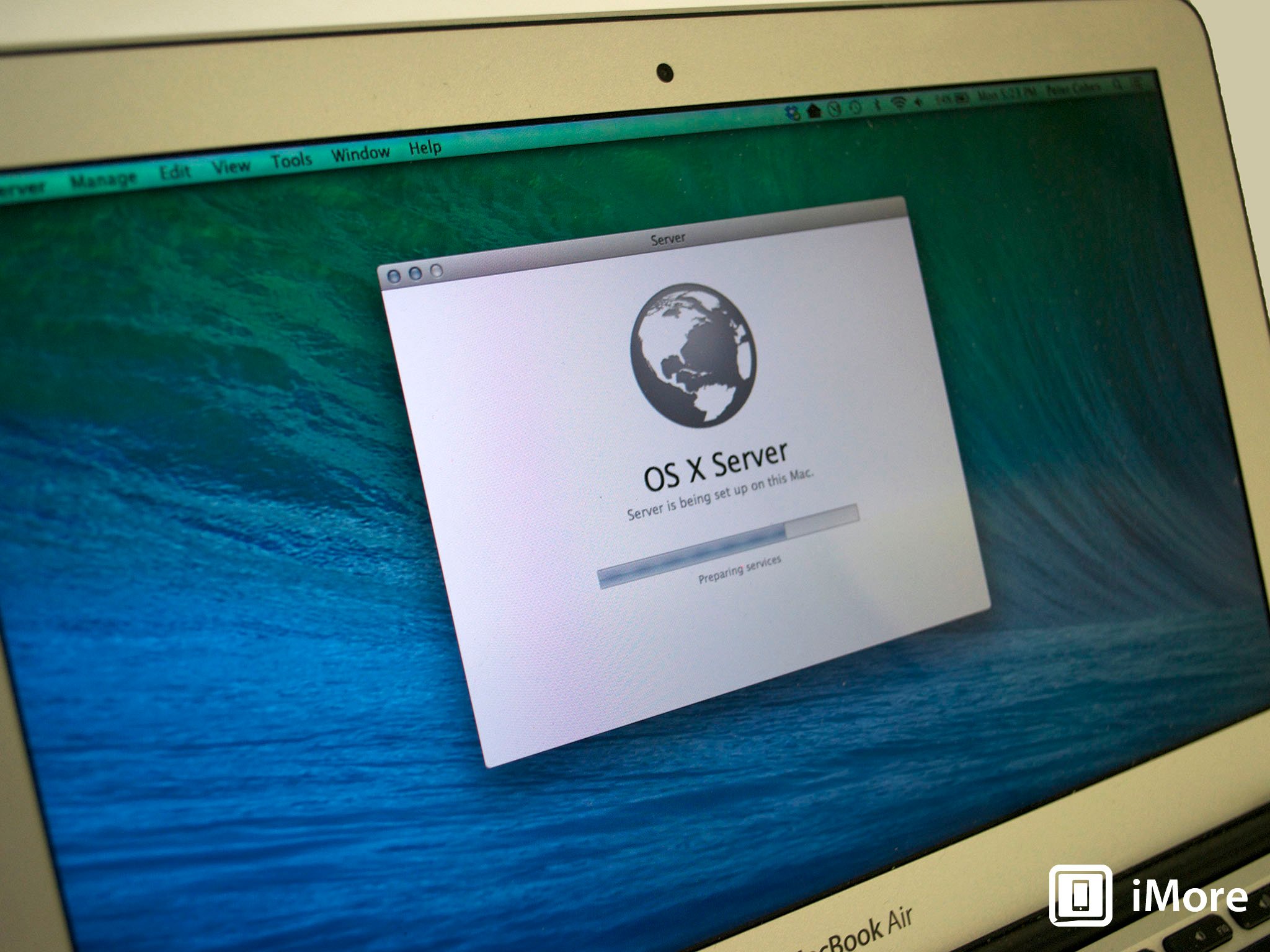OS X Mavericks Preview: OS X Server - friend to Macs, iOS devices

In all that's been written or said about OS X Mavericks, precious few words have been saved for OS X Server, which, of course, is getting the Mavericks treatment too. Let's take a look at some of the enhancements coming to OS X Server when Mavericks bows this fall.
OS X Server, using the same underpinnings as OS X, provides server-strength file sharing capabilities, database publication (including contact and calendar functionality), live video streaming, e-mail service, wiki and Web site publication, iOS device management, and more. It includes powerful open source software like Python, a popular scripting language, PostgreSQL for Structured Query Language (SQL) database support, and Apache, a popular open-source web server.
Apple's senior vice president of Software Engineering, Craig Federighi, offered nary a word about OS X Server during his keynote presentation introducing Mavericks at Apple's Worldwide Developer Conference (WWDC) in San Francisco last month. Should you infer from that a disinterest in server software coming from Apple's senior management? No. In fact, the opposite is true. They're very interested in seeing OS X Server do well, because it's crucial to the entire Apple ecosystem.
Working hand-in-hand with OS X on desktop and laptop Macs
The history of Macs as servers is almost as long as the Mac itself. Apple has sold server products for years - even in the pre-OS X "Classic" Mac OS days. Up until fairly recently, however, OS X Server remained the rarified domain of corporate IT departments. In January, 2011 Apple discontinued its rack-mountable server product, the Xserve, and IT jocks (and analysts) panicked - it seemed like Apple was pulling up stakes out of the enterprise space all together.
How wrong we were.
Turns out the Mac mini has had smashing success as a server, for the lucrative Small to Medium Business (SMB) market and also as a workgroup server for small to medium-sized groups of employees in corporate environments. The diminutive laptop is available in a server-specific configuration with two internal 1TB hard disk drives for $999. But you can install OS X Server on any Mac you might have lying around that's running up-to-date operating system software.
That's because Apple also radically changed the way it sold OS X Server.
As recently as Apple's release of Snow Leopard, Mac OS X v10.6, the company sold Snow Leopard Server separately from the "regular" operating system. $499 netted you a single server installation with support for unlimited users.
iMore offers spot-on advice and guidance from our team of experts, with decades of Apple device experience to lean on. Learn more with iMore!
An incredible value
Now OS X Server is actually included with the regular operating system. You can buy a server management application for $19.99 as a download through the Mac App Store.
That's not changing with OS X Mavericks - you'll still be able to buy a separate management app through the Mac App Store. Apple continues to build the core capabilities into the regular consumer operating system.
Here's what Apple has to say{.nofollow} about OS X Server in Mavericks:
OS X Server includes a number of innovations that will help the people who use your network as well as the people who manage it. The new features in Xcode Server make it easier than ever for a Mac or iOS development team to create robust, reliable software, thanks to continuous integration, testing, and repository hosting services. Caching Server 2 speeds up the download and delivery of software through the App Store, Mac App Store, and iTunes Store, and it can now cache on your server for faster downloading to iOS 7 devices. And Profile Manager has an array of new management features for iOS 7 and OS X Mavericks that simplify software distribution of apps and books.
A friend to iOS devices as well
In other words, OS X Server in Mavericks is pretty much going to be a continuation of what we've seen - enhancements, rather than a major upheaval, designed to facilitate better workgroup communication in areas where OS X Server is really useful - teams of programmers working together on projects in Xcode, Apple's development environment for OS X and iOS applications alike, for example. Or businesses that are leveraging iOS devices like the iPhone and iPad among their employees, whether it's standard-issue policy or Bring Your Own Device (BYOD). Caching Server 2 promises to reduce wasted employee time by hastening the speed at which OS X Server will download content from iTunes, the Mac App Store or the App Store for iOS.
But don't think OS X Server is only good for Macs, iPads and iPhones. It's built on the same open standards and proven technology as the rest of OS X. It is OS X. It's a good corporate citizen that plays well with Windows PCs, Linux boxes and other various and sundry computing devices, too.
Some pundits and analysts erroneously think that Apple doesn't care about the enterprise space - those blowhards don't see Apple selling server hardware to compete with Dell, IBM and other companies, and assume the company is MIA. Nothing is further from the truth - Apple's been here all along. It's just that they have a very different handle on the market than most of the other companies in enterprise computing do. $20 gets you everything you need to get OS X Server off the ground. Compare that with the costs of server racks and blade systems and specialized server software used in other venues. It's a remarkable difference.
Are you in IT? Do you depend on OS X Server either as a user or an administrator? Or is this all rubbish that you don't care about? Talk to me in the comments, please, I'd love to hear from you. And please follow these links to find out more about OS X Mavericks or to have a conversation with other users about what features you're looking forward to most.

